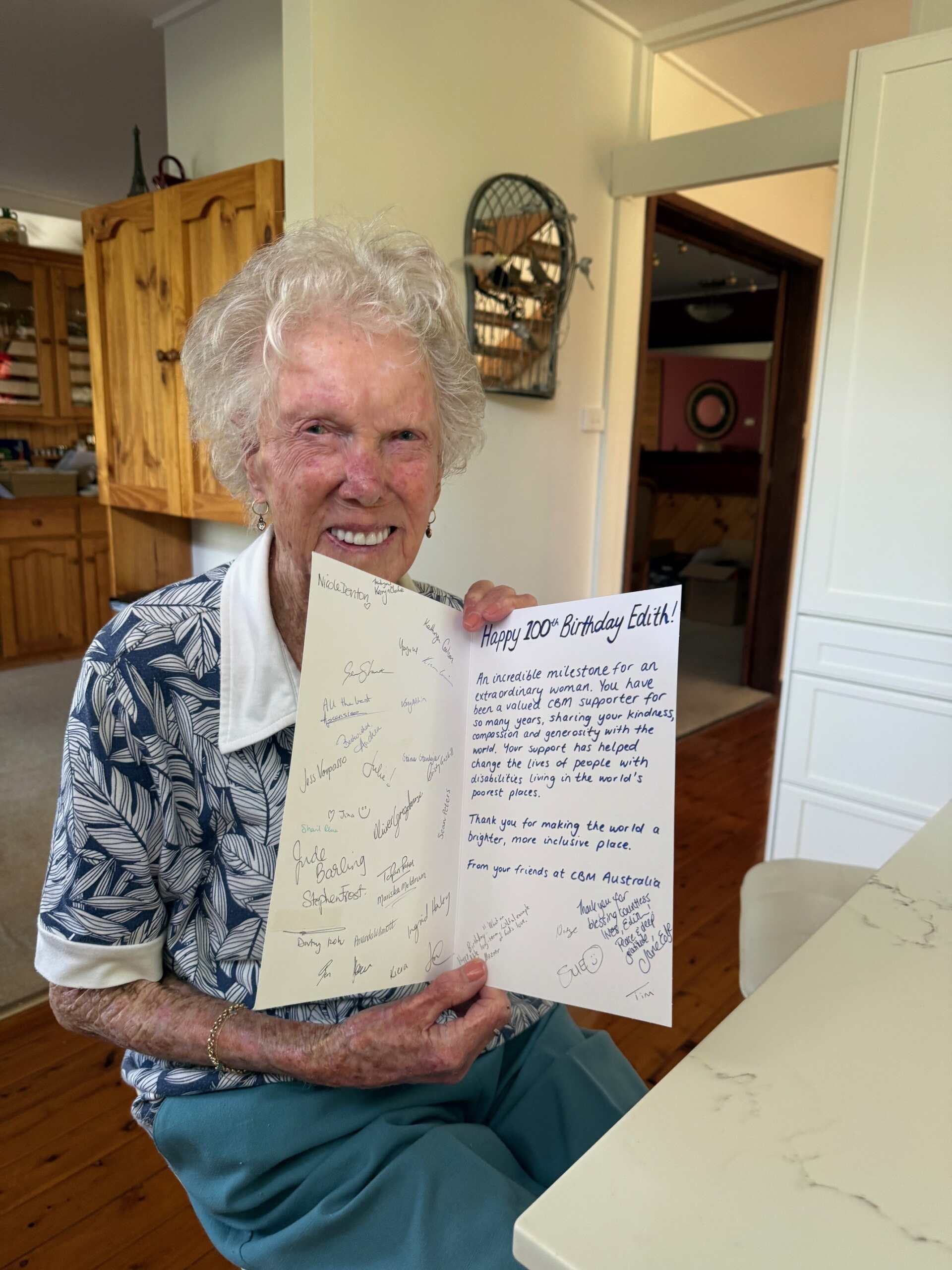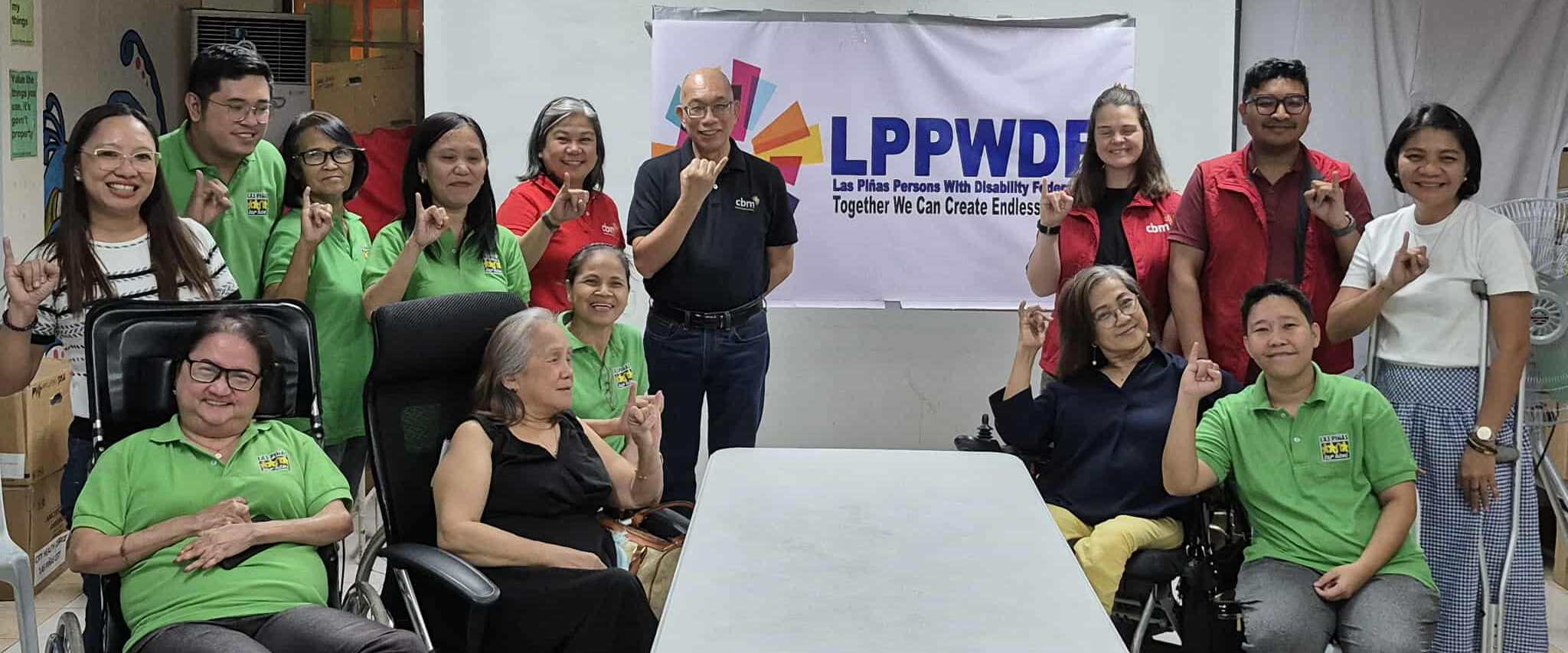Reducing blinding Trachoma in Ethiopia
Stories | February 10, 2022
Trachoma is an eye disease caused by bacterial infection. It is transmitted through personal contact (hands, clothes, or bedding) and flies. It affects the vision of 1.9 million people. If left untreated, it can result in permanent blindness. Currently, around 137 million people live in Trachoma-endemic areas and are at risk of Trachoma blindness.
CBM Australia supported partners in Ethiopia to reduce the risk of blinding Trachoma by increasing access to safe water, improving hygiene and sanitation, advocating for accessible health services, and providing testing and referral services for treatment.
A recent independent evaluation looked at the effectiveness of the CBM project and its impact on reducing the risk of Trachoma through improved access to safe and clean water. From a survey of 659 households in the target area, it found that 99 per cent of households had improved access to drinking water – a significant increase from the baseline figure of 52 per cent. This was thanks to the construction of four water spring developments, four wells and 13 shallow wells – all of which were made accessible by ramps.
The evaluators heard positive feedback from people in the community:
“Due to the water scheme, we started to drink clean water, free from mollusc and snails. We thank you indeed.”
“We had a water problem but now we are happy for the water provision which helped us with drinking water and washing our clothes”.
Prior to the project, it was not uncommon for people, including school children, to go to the toilet outside, increasing the risk of Trachoma. However, by improving sanitation facilities and increasing awareness of good hygiene practices, the evaluation found that students were less likely to go to the toilet outside. To achieve this, the project supported the construction of separate male and female toilet blocks in three schools, and provided jerrycans and soap for hand washing, mirrors to check face hygiene, as well as cleaning mops and brooms. The project also supported the establishment of Anti-Trachoma Clubs in school by providing them with educational material. A local person highlighted the benefits of the project by explaining how it, “helps us to keep our environmental and personal hygiene of the students as well as the community.”
This positive outcome did not stop at school children. Instead, school children understood and spread messages about the importance of good hygiene and sanitation to their parents. School children also encouraged their parents to build working toilets and hand washing facilities in their own homes. As a result, 92 per cent of households surveyed had a toilet – a significant increase from the baseline figure of 46 per cent.
The improvements in people’s hygiene habits did not go unnoticed by other villages. Those outside of the project’s target area requested that the project be extended into their neighbourhood and they started building toilets themselves, sending a clear message that they too wanted improved water and sanitation.
To raise awareness and prevent the spread of Trachoma, the CBM project trained female Health Extension Worker (HEW), Water committee members, Anti-Trachoma School Clubs, and hygiene educators. As a result, 99 per cent of villagers surveyed said they knew about Trachoma, with 89 per cent saying their knowledge of Trachoma came from health professionals. Most people also recognised that some combination of face and hand washing and using a latrine, with surgery and/or modern medicine were a good preventative measure. Encouragingly, 97 per cent also recognised that untreated Trachoma can lead to permanent blindness, indicating that they understand the potential impact of not seeking treatment or reducing risk.
The project team also identified people with Trachoma, and ensured they got treatment before permanent blindness set in.
One woman who benefited from that support told the evaluators: “I am the eyewitness of the project in prevention and control of Trachoma. I was a person with disabilities due to Trachoma but now I’ve got my sight back and can lead my life properly. Similarly, many women have got back their sight and are living comfortably. We received eye treatment and medication. We also received proper health education to prevent Trachoma.”
Overall, the evaluation concluded that the project made a significant contribution to the reduction of Trachoma in the target area. Improved hygiene also meant that communities were better able to manage the risks of Covid-19.
CBM acknowledges the support of the Australian Government through the Australian NGO Cooperation Program (ANCP)
https://www.cbm.org.au/stories/reducing-blinding-trachoma-in-ethiopia
Related Stories

Edith turns 100 – A life of generosity and joy
On Saturday, 4 October, Edith’s family gathered to mark an incredible milestone in style. Surrounded by her children, grandchildren...

Advent 2025: God’s presence includes all
Reflect on how Isaiah 40’s call to ‘Prepare the Way’ invites us to remove barriers and create a community...

Strengthening OPDs for inclusive governance and leadership in the Philippines
In the Philippines, the journey toward disability inclusive governance...
